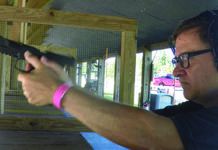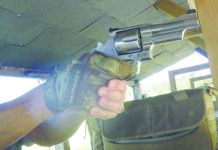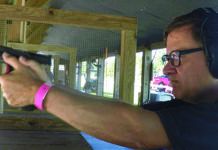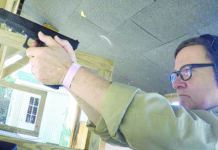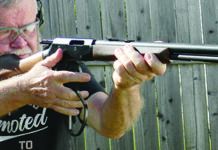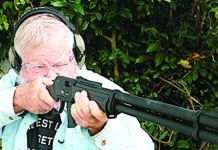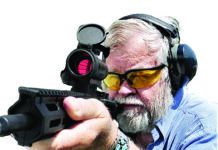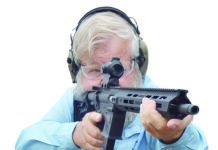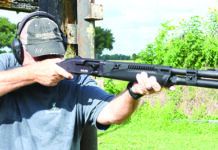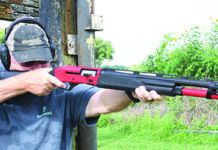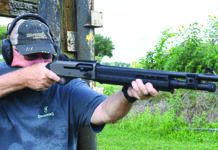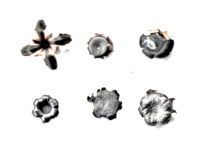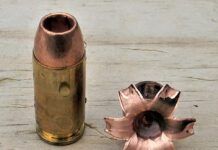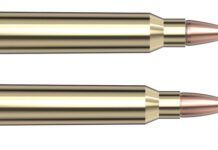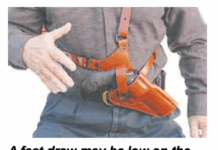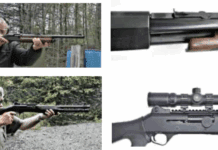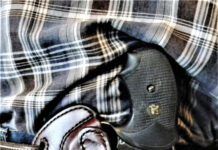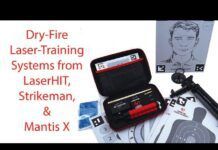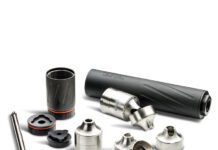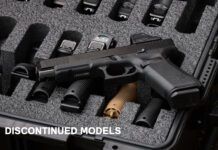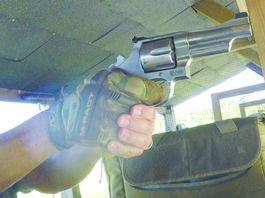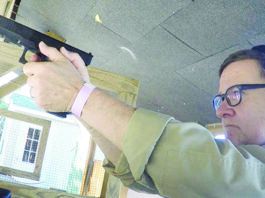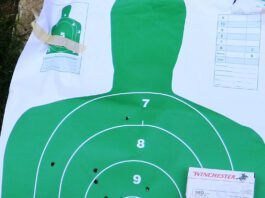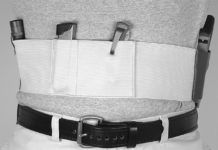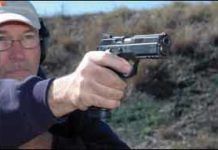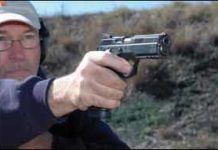Uberti’s Cattleman Mistimed
Uberti’s Cattleman with a 3.5-inch barrel differs little from what other manufacturers refer to as a Sheriff’s model. In fact, without a good look at the bore, you can’t tell it apart from Cimarron’s New Sheriff. Moreover, the guns are closely related in areas other than configuration and caliber. The box our Cimarron Thunderer came in had an Aldo Uberti sticker on it covered unabashedly by a Cimarron sticker. We have heard that the parts for many of today’s cowboy guns are made in Italy by Uberti and assembled by differ- ent companies.
Video: Gun Tests Magazine Recognizes Kel-Tec for PMR-30 22 Magnum “Best in Class Pistol”
Gun Tests Magazine Publisher Timothy H. Cole recognized Kel-Tec’s PMR-30 22 WMR as the publication’s “Best in Class Pistol” for 2011 at the just-concluded SHOT Show in Las Vegas. Cole made a special award to Derek Kellgren, Kel-Tec CNC Industries’ Director of Marketing at the show.
Wilson Tac Offers Limited Collectionof Handmade Knives
In 2012, Wilson Tactical will offer a limited collection of handmade knives by some of today's premier tactical knife makers without the long wait typically associated with special ordering a custom-edged masterpiece.
Galco Underwraps Bellyband
The Galco Underwraps BellyBand is an elastic garment that can be worn low, just above the waistband, or high underneath the armpit. It resembles a heavyweight Ace bandage that secures with Velcro.
Glock G19 9mm, $646
Recently, the Gun Tests staff received a letter urging them to test more deep-concealment guns, claiming that they are the most popular gun of the day. Checking with one of the larger distributors (www.camfour.com), confirmed that it is the subcompact and micro guns that are currently driving the market. In this test Gun Tests did not evaluate pocket guns, but they did shoot four compact pistols that in are just one step larger than the smallest model available from each manufacturer.One test gun the staff chose was the $646 Glock G19, the smaller brother of the G17, found on the hip of law enforcement worldwide. The Glock 19 gets little press, but remains popular.
SHOT Show Special:SIG Debuts New P224 Subcompact
SIG SAUER's new P224 is the company's first true subcompact in its all-metal firearms line. It's based on the P229.
9mm Practical Shooting Pistols: Glock, Springfield, and CZ USA
The sport of Practical Shooting is a game with roots in self defense. The challenge is to not only land accurate shots onto scoring zones that could represent an incapacitating wound, but do so in the fastest time possible. Of course no one is shooting back, but speed is rewarded on the assumption that the competitor has determined a bona fide threat and fired first. What makes the sport of Practical Shooting really interesting is that no two shooting matches are the same. But at any given event the shooter will have to draw from a holster, snatch the gun from a closed drawer or from a table top, and subsequently perform multiple reloads.
9mm Practical Shooting Pistols: Glock, Springfield, and CZ USA
The sport of Practical Shooting is a game with roots in self defense. The challenge is to not only land accurate shots onto scoring zones that could represent an incapacitating wound, but do so in the fastest time possible. Of course no one is shooting back, but speed is rewarded on the assumption that the competitor has determined a bona fide threat and fired first. What makes the sport of Practical Shooting really interesting is that no two shooting matches are the same. But at any given event the shooter will have to draw from a holster, snatch the gun from a closed drawer or from a table top, and subsequently perform multiple reloads.
Bersa Thunder HC Pro Pistolis Now Available
Eagle Imports, Inc., importers of the Bersa line of firearms, has introduced the new and improved Bersa Thunder High Capacity (HC) PRO Series.
Umarex USA Expands .45 caliberRegent Handgun Line
Umarex USA is expanding its line of .45 ACP handguns with the addition of the Regent Handgun Line.
Sphinx Rolls Out SDP Compact 9×19 Pistol
Sphinx, the Swiss pistol manufacturer, is releasing a 9x19 Parabellum compact pistol designed specifically for the law enforcement and military markets.
Freedom Group Appoints Nardelli as CEO
Remington Arms Company and its parent, Freedom Group, Inc. (FGI), are pleased to announce that the board of directors has appointed Robert L. Nardelli as Chief Executive Officer.


